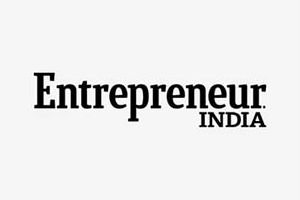The fact that gender diversity is something companies constantly aspire towards highlights the problem in itself. When is the last time you heard someone saying “Our organization prides itself with the increase in the number of male employees we’ve seen over the past (number of) years”? Truth be told, there are several professional industries where the female to male ratio is still nowhere close to equal. Yet any minute change is also celebrated with much gusto, which might lower the benchmark as a whole. Across industries, the workforce gender balance is still highly skewed, even in domains which do not conventionally involve laborious work. The tech industry is a case in point, with the workforce imbalance definitely being one of the most prominent on the list. But women and the tech companies they aspire to join are steadily ensuring this gap is being filled.
The Global Pattern
Diversity and inclusion need to go hand in hand, and women around the world are increasingly assuming important positions and taking core decisions in the Tech space. These women are driving technological change and innovation which impact the industry at large. According to a study by Accenture, in 2016, women on corporate boards (16 per cent) were almost twice as likely as their male counterparts (9 per cent) to have professional and core technology experience among 518 ‘Forbes Global 2000’ companies.
Gender diversity, like diversity in general, is important for varied perspectives and thought processes in a company. These perspectives are what help shape advancements and new ideas in technology and overall operations for the success of the business. This is especially true for technologies such as artificial intelligence (AI). The effects of personal biases on AI can tilt the results and, thus, they require a number of inputs and caution on the team’s part, to be able to produce accurate solutions based on diverse and inclusive data.
Companies often also tend to get lost in the whole ROI, prioritizing the peripherals associated with hiring women rather than focusing on hiring talent with potential and then training them if necessary. However, the situation is improving, with many new start-ups and established corporate houses reimagining their entire workforce to make it more inclusive, diverse as well as skill-centric. This, along with a vast number of new work profiles being developed, thanks to the increasingly digital world, makes way for greater opportunities for women and people from diverse cultures and backgrounds.
The Education Level and HRD
According to a 2016 report on Higher Education by the Ministry of Human Resource Development, Government of India, women were at or near parity among undergraduate degree in science, and IT and computer; with 50.1 per cent and 47.7 per cent respectively, but are at 31.9 per cent in engineering and technology. In order to convert these students to employees for the long-term, it is important to maintain retention and hiring standards at the company-level. This will impact the future of the workforce as well. Most women are on par with men when it comes to skills, but face discrimination in other areas, thus creating a gap and reducing the will to continue at the company.
As per reports, biased treatment within the workplace is one of the most frequently cited reasons for leaving, followed by poor management, irrespective of gender or factors related to it. There is still scope for a shift in attitudes at workplaces, which is a major hindrance when it comes to retaining women employees. Thus, keeping a check on employees both senior and junior will help the overall system and retain good talent. A study by Booking.com revealed that more than four in five women (83 per cent) currently working in the tech industry globally say they intend to remain in tech for the next 5 to 10 years. This is indicative of their increased confidence in their current roles and future potential.
The Course of Action
However, In order to retain this talent and hire more talent like this, Governments, NGOs and leaders from tech organizations need to come together to help close the gender gap further by providing more flexible work options and decision-making opportunities for women. Additionally, there is a need for training employees both for skills and workplace conduct, along with robust Human Resource systems which monitor employees at all levels and roles. These processes in the workplace will help to ensure that more talent sticks around for the long run. Additionally, it will also encourage the rest of the tech sector to make a more pronounced effort towards developing a truly inclusive workforce.
Though there is still a lot of scope for improvement in the area of gender diversity and inclusion, the tech industry has seen an immense increase in women professionals. Additionally, AI is playing a major role today, with companies and even governments looking to use the technology for important processes and policies.
More and more women across the world are interested in pursuing tech careers or maintaining their existing ones. There is a need to encourage them to take up roles in AI and STEM (Science, Technology, Engineering, and Maths) with opportunities that are both fair and equal. Given the computer-driven nature of AI, there is a need for women from diverse backgrounds to balance out the conventionally male-dominated profession to give an accurate representation. Thus, an inclusive and diverse workforce, combined with better HR policies will retain and draw in more women. This, in turn, will help the entire tech industry to develop a more comprehensive, empathetic way of operations, which will undoubtedly influence the future socio-cultural thread driven by products and services developed by them.
























